Survival of the smallest?
The long-term impact of climate warming on the body size of non-commercial fishes in the Adriatic Sea
Stressed fishes are smaller
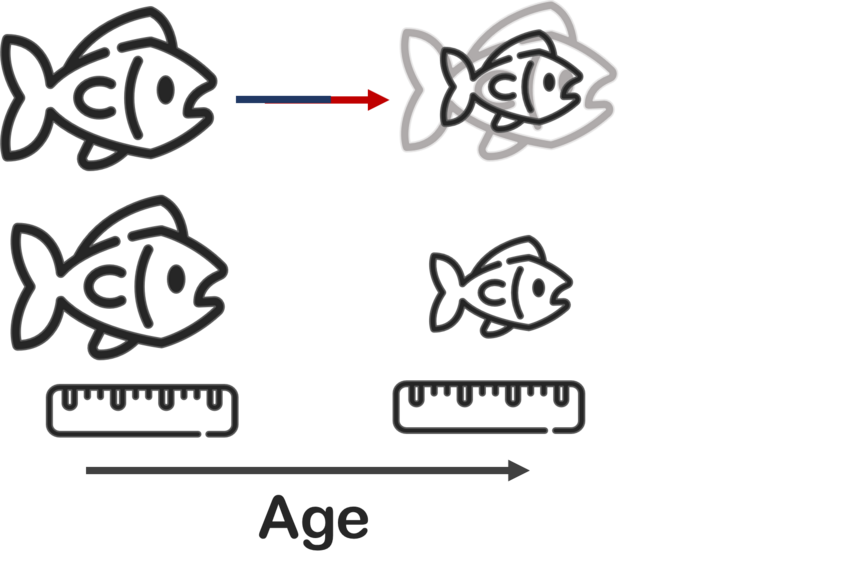
One of the universal rules in ecology, the Temperature-Size Rule after Atkinson (1994): fishes grow faster in warmer water as juveniles and mature earlier and consequentely at smaller sizes. This results in an overall smaller adult body size.
Stressed fishes are smaller
Our oceans are undergoing remarkable and distressing transformations because of global warming, and fishes are feeling the effects as well. Fishes make up the most diverse group of vertebrates and play essential roles in aquatic ecosystems. Currently, there is a noticeable pattern where they are decreasing in size as the ocean temperatures rise. We are still in the process of understanding why this is happening and what it means for our marine ecosystems.
Answers in the fish' head: calcified ear stones
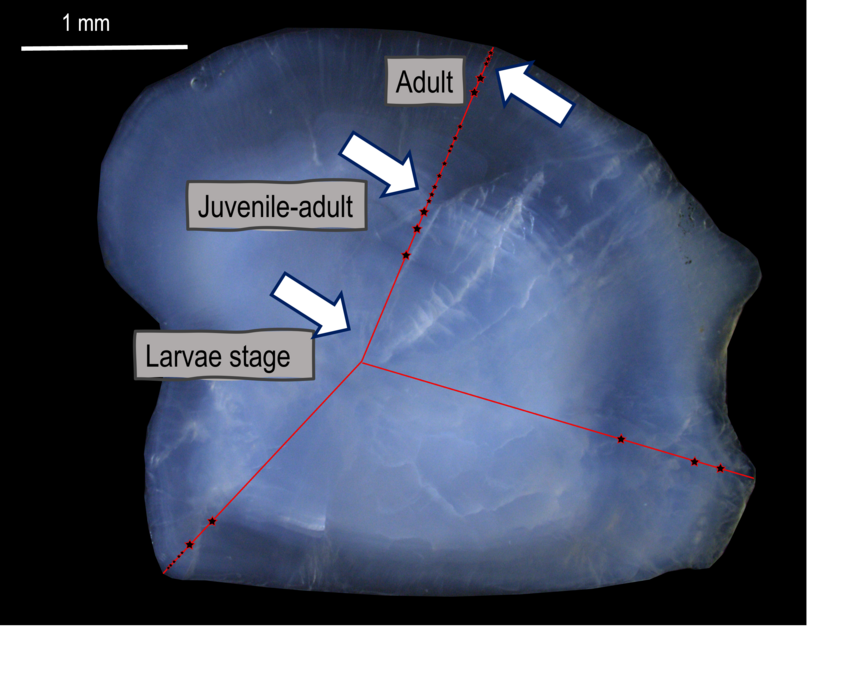
Life history preserved in the incremental record of the otolith: red lines indiacte the axes for counting the increments, which are marked with stars. Arrows indicate transitional phases from larvae- to juvenile, to adult-life history stage.
Answers in the fish' head: calcified ear stones
To reconstruct the growth and size of fishes, we use small stones in the inner ear of fishes that help them perceive sound and balance themselves, called otoliths. These structures are made out mostly of calcium carbonate and grow continuously from the fish’ birth to death by adding alternating mineral-rich and protein-rich growth increments with different optical properties around a core onto an organic matrix. These ‘time-keeping properties’ offer a unique insight into a fish’s life and growth history (similar to tree rings). When the fish dies the otoliths are preserved. They are separated from the decomposing fish body and buried in the sediments of the sea floor, from where we can retrieve them.
What we do
We look at small non-commercial fishes from the Adriatic Sea and use fossil and modern data to reconstruct the long-term impact of warming on their body sizes. Non-commercial fishes are not targeted by the fishing industry and are not affected by size selective pressures.
Here you can learn more about our study area, the Adriatic Sea.
Why we use palaeontological data:
We lack long-term data to evaluate the current shrinking trends on the long run and our knowledge of pre- human impact on fish communities and fish ecology is limited by the modern monitoring, which only started in the middle of the 20th century. This means that we are missing crucial baseline data from the early industrial and the pre-industrial, historical and archaeological years, where humans were already having a significant impact on marine ecosystems. Taking a step back into the past, we can use precious information from the recent fossil record to understand and predict fishes’ responses to past and present-day environmental change, including global warming.
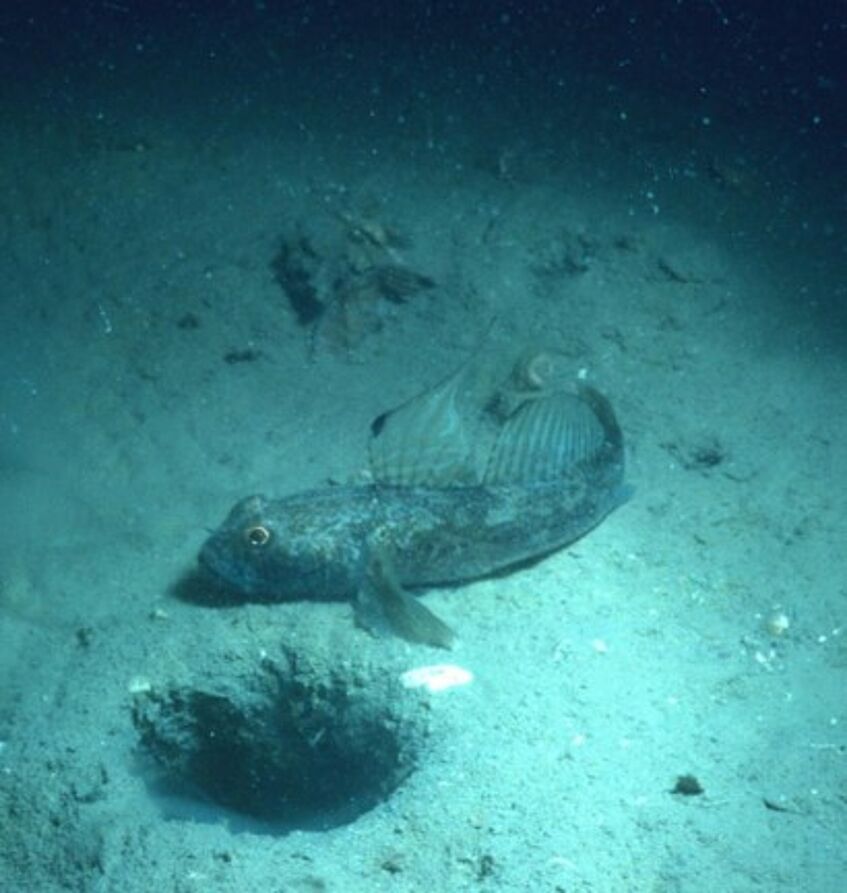
Species of interest: The black goby belongs to the family Gobiidae and is a very common species today and in the geological past.
Credit: Michael Stachowitsch
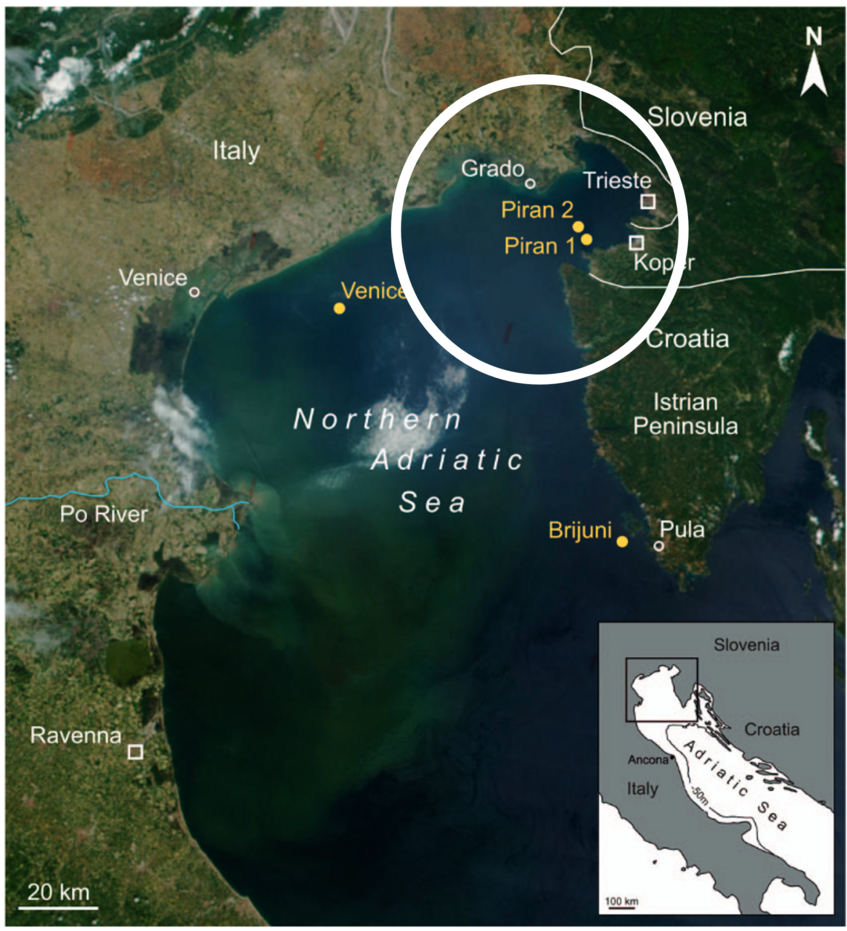
Locations of the sampling stations (modified after Gallmetzer et al., 2019). Credit: Ivo Gallmetzer
Methods
Our material
- Otoliths sampled out of sediment cores and grab samples (click here for sampling information)
- Otoliths sampled from fishes caught alive off the coast of Piran, Slovenia
What is sclerochronology?
Sclerochronology is the study of time-related growth patterns in biological hard (calcified) structures such as otoliths, mollusk shells or coral skeletons. Growth patterns in these hard tissues also contains information about environmental conditions like temperature, nutrient availability and other factors. We are therefore able to reconstruct past enviornmental conditions.
Our methods
- Radiocarbon dating of fossil otoliths: allows us to establish a high-resolutiion time series of growth and body size changes. We can determine the otolith geological age independently from their stratigraphic position in the sediment record
- We use a combination of light microscopy and electron beam techniques: Backscatter Electron Microscopy (BSE), Eectron Probe Micro-Analysis (EPMA) and Electron Backscatter Diffraction (EBSD) to investigate microstructural characteristics and chemical compositions of otoliths at exceptional high resolution
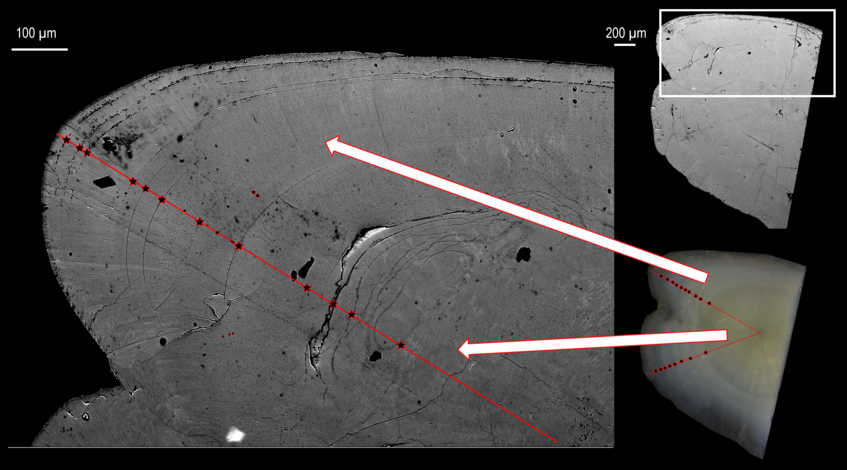
BSE image of a Holocene otolith (6728 yrs BP). The incremental record is preserved in exceptional high resolution (left) and dif-ferent ontogenetic stages (larvae/juvenile and transition to sedentary adult stage) can be correlated via texture differences visible on the BSE-image and via opacity differences on the LM image (bottom right). The transects indicate where incremental analysis is done. Credit: Isabella Leonhard
